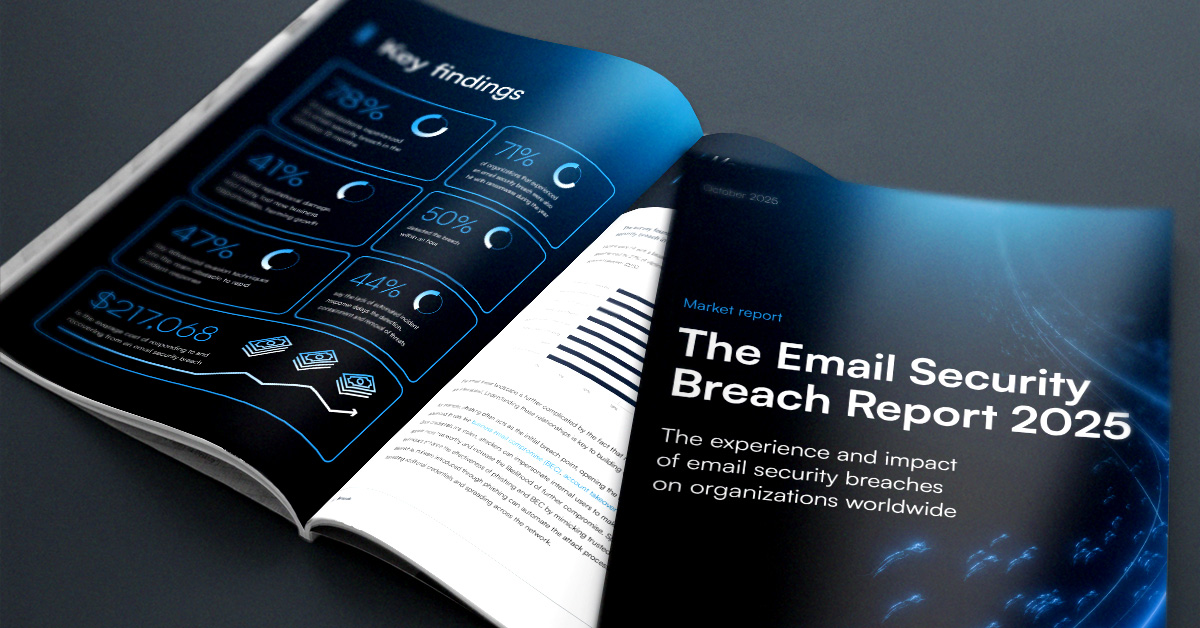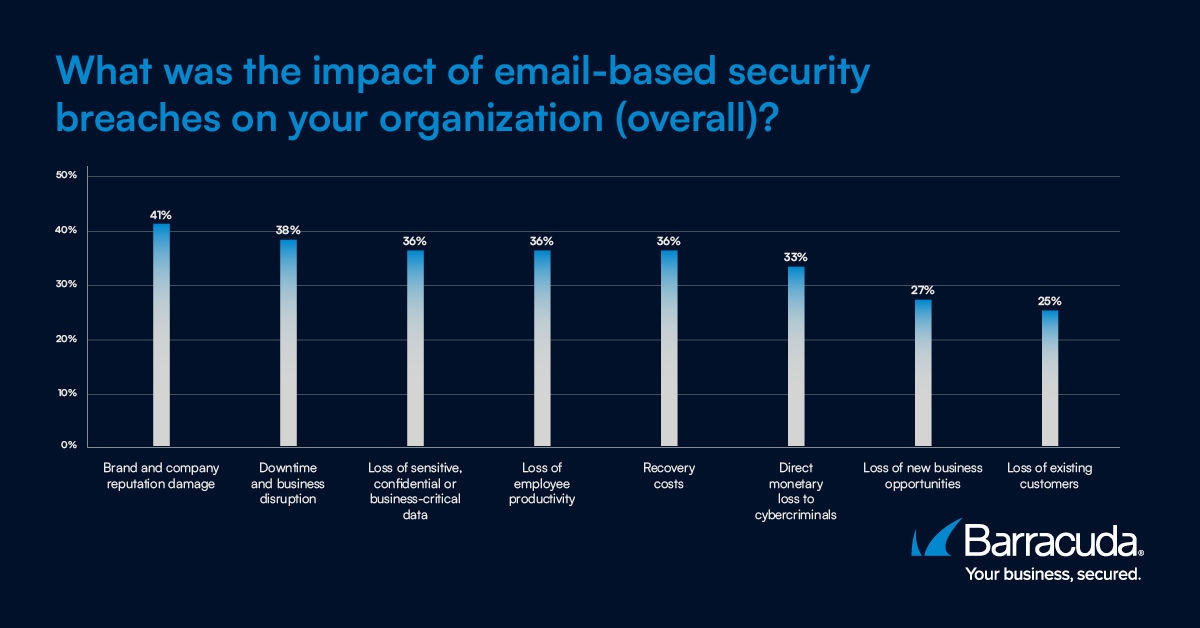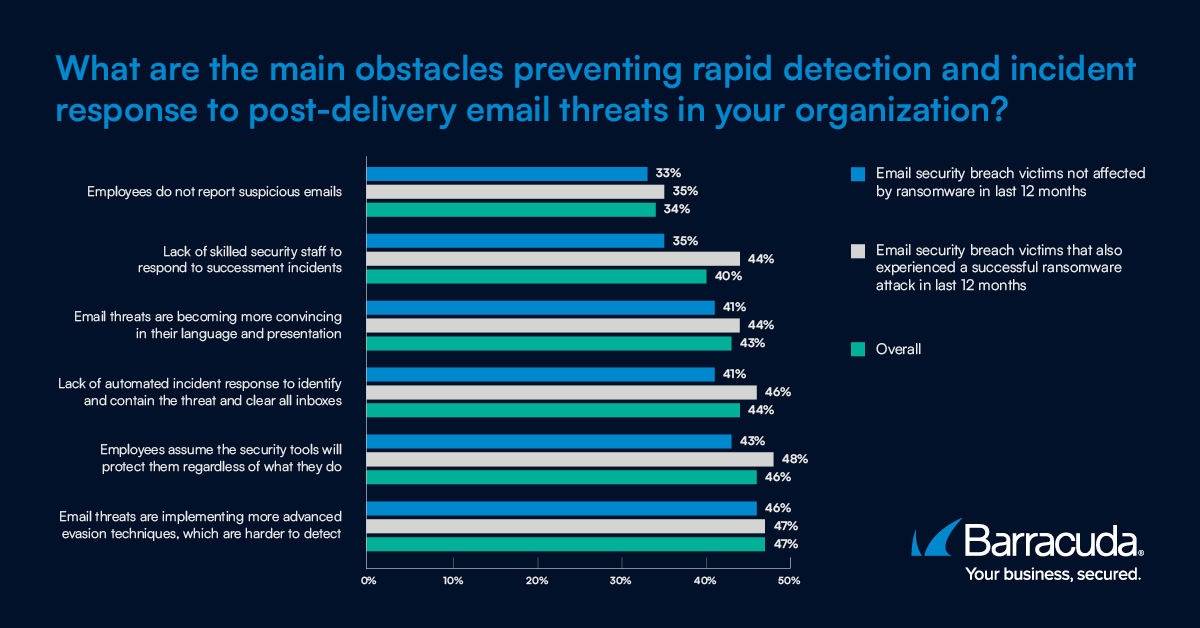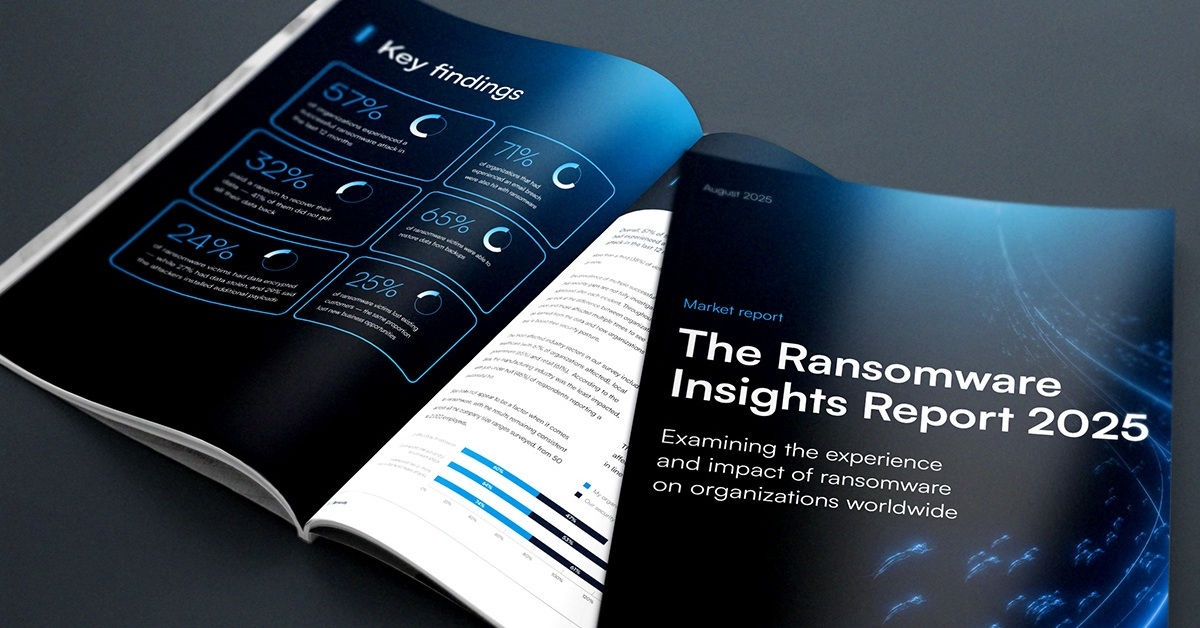
I ritardi nelle violazioni delle e-mail possono moltiplicare per otto il rischio di ransomware.
Le violazioni delle e-mail colpiscono quasi tutte le organizzazioni. Il nuovo Email Security Breach Report 2025 rivela il preoccupante dato che il 78% delle organizzazioni ha subito una violazione delle e-mail nell'ultimo anno. Solo la metà di esse ha rilevato la violazione entro un'ora. Ancora meno (41%) hanno affermato di essere riuscite a rispondere e mitigare un incidente entro un'ora dalla sua rilevazione.
Questo è importante perché gli attacchi veicolati tramite e-mail possono essere spaventosamente veloci. Research mostra che il tempo mediano che un dipendente impiega per cadere in una e-mail di phishing è inferiore a 60 secondi: 21 secondi per cliccare sul link e poi 28 secondi per inserire i dati richiesti. Armati delle credenziali rubate e dell'accesso, i passi successivi degli attaccanti possono essere altrettanto rapidi. Ad esempio, non molto tempo fa, un gruppo di cybercriminali took solo 54 minuti per passare dalla violazione della rete di una vittima alla crittografia del primo file con ransomware Akira.
Gli attacchi veicolati tramite e-mail sono spesso solo l'inizio di un incidente più grande. Fermare questi attacchi nelle loro fasi iniziali è una priorità per la sicurezza. Più velocemente ed efficacemente riesci a rilevare e neutralizzare una violazione e-mail, più sei resiliente contro cyberattacchi in corso, come ransomware, furto di dati o estorsione.
Uno dei risultati più preoccupanti dell'indagine è che le organizzazioni che impiegano più di nove ore per risolvere una violazione della sicurezza e-mail nota hanno il 79% di probabilità di essere anche vittime di ransomware — una delle forme di attacco informatico più dannose, dirompenti e costose.
L'impatto diretto di una violazione della sicurezza e-mail può, di per sé, essere significativo.
Le violazioni delle e-mail danneggiano le operazioni e la crescita
I risultati mostrano che il 41% delle vittime di violazioni e-mail ha subito danni reputazionali. Molti riferiscono che le operazioni aziendali sono state interrotte, la produttività è diminuita e una parte significativa ha perso nuove opportunità di business e clienti, danneggiando la crescita.

Il costo del recupero
Anche i costi di recupero possono essere considerevoli. Secondo l'indagine, il costo medio per rispondere e recuperare da una violazione della sicurezza e-mail nel 2025 è di $217.068. Le piccole imprese sono colpite particolarmente duramente. Le aziende con 50 a 100 dipendenti sostengono costi di una media di $1.946 per persona, mentre le organizzazioni più grandi con 1.000 a 2.000 dipendenti vedono costi medi di $243 per dipendente.
Barriere alla resilienza informatica
Una risposta agli incidenti più rapida ed efficace aiuta a contenere e limitare i danni. Ma possono esserci ostacoli lungo il percorso.
Il sondaggio mostra che la complessità delle minacce e-mail, la carenza di competenze e la mancanza di incident response automatizzata rendono la rilevazione e il recupero rapidi una sfida per molte organizzazioni. Il 47% afferma che le tecniche avanzate di evasione sono il principale ostacolo a una rapida incident response, mentre il 44% sostiene che la mancanza di incident response automatizzata ritarda la rilevazione, il contenimento e la rimozione delle minacce.

Protezione integrata
La sicurezza e-mail non riguarda più solo il blocco dello spam o del phishing di basso livello; si tratta di prevenire la caduta del primo domino in una catena di minacce informatiche che potrebbe culminare in una paralisi operativa, perdita di dati, danni reputazionali e impatti aziendali a lungo termine.
Con i giusti strumenti di sicurezza e-mail, supporto e formazione come parte di una piattaforma di sicurezza profonda e integrata, le organizzazioni hanno maggiori possibilità di difendersi da attacchi sempre più complessi.
Il Rapporto sulla Violazione della Sicurezza delle E-mail 2025 si basa sui risultati di un sondaggio internazionale condotto da Barracuda con Vanson Bourne, raccogliendo informazioni da 2.000 decisori IT e della sicurezza in Nord America, Europa e Asia-Pacifico.
Per ulteriori risultati e approfondimenti, leggi il report.

The Ransomware Insights Report 2025
Risultati chiave sull'esperienza e l'impatto del ransomware sulle organizzazioni a livello mondiale
Iscriviti al blog di Barracuda.
Iscriviti per ricevere i Threat Spotlight, commenti del settore e altro ancora.

Sicurezza della vulnerabilità gestita: correzione più rapida, meno rischi, conformità più semplice
Scopri quanto può essere facile individuare le vulnerabilità che i criminali informatici vogliono sfruttare





